A website on Africa means that I must not forget to write about the African wildlife, right? Today I am going to write about 13 facts on the African elephant, and that is actually my favorite animal on this planet! (besides hyenas, yes hyenas haha! ).
I will write more about the African wildlife soon, rest assured, but I’m pretty sure that this animal, belonging to the big five, is on a lot of people’s top list. So let’s dive straight into things.
What is the African elephant?
Well, I think we all know what an elephant is, but I wanted to make a distinction between 3 different kinds of elephants today, and we are only talking about 1 of them on my blog. There are actually 3 types of elephants still living today:
- The African bush elephant (Loxodonta Africana), or aka the Savanna elephant.
- The African forest elephant (Loxodonta Cyclotis)
- And the Asian elephant (Elephas maximus)
Each of these has different characteristics. The characteristics of the African bush elephant are what I will be diving further into today and sometimes compare them to the other 2 species.
They are the only living elephants at the moment, as the other types, like the mammoth, are extinct. ( although scientists are planning to reintroduce them by the year 2027. That would be the day! ).
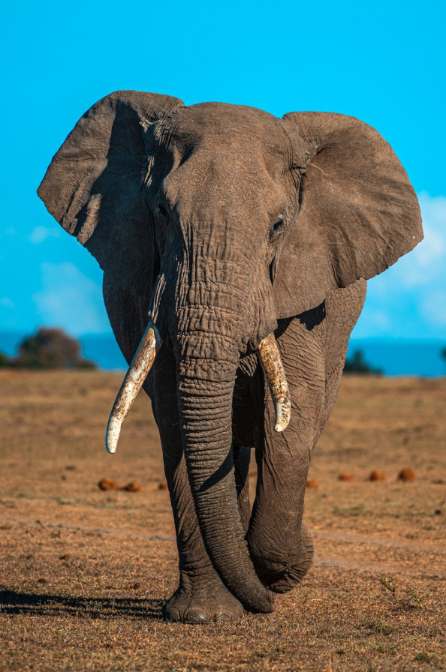
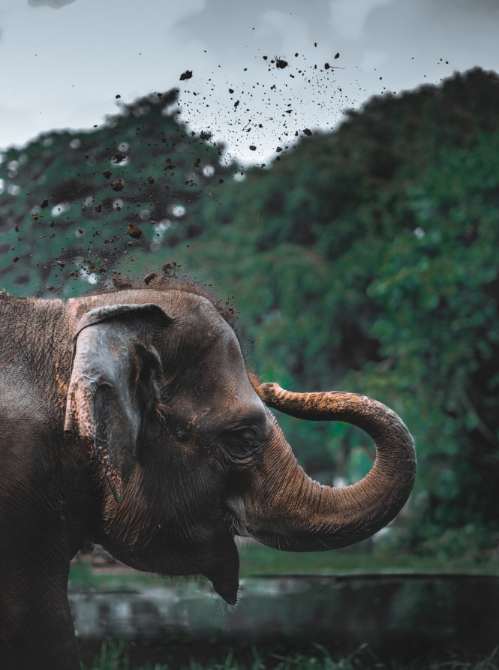
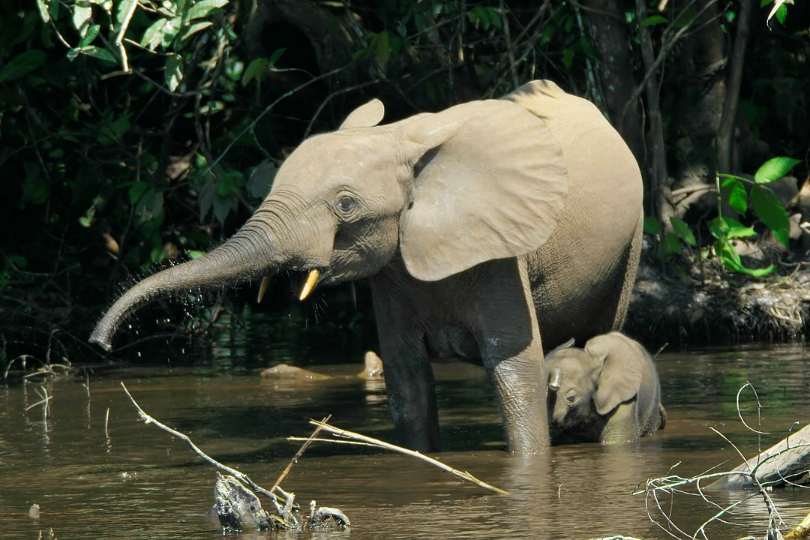
1. The ears of the African elephant.
The ears of the African bush elephant are actually shaped in the form of the African continent, isn’t that one of the most amazing facts on the African elephant? Other characteristics are:
- they can grow up to 6 ft (1.8 m), this makes them bigger then the ones from the Asian elephant ( up to about 5 ft (1.5 m) ). The difference in sizes and shapes have to do with the habitat they live in.
The African savanna is very open and has extreme temperatures and thus need a lot of protection from the sun. Asian elephants, however, live in shady forests where they do not see a lot of sunlight. - the elephants ears are used to cool of the body. When the weather is hot, they increase the blood supply to the ears and “flap” them around, so they loose body heat.
- the ears of the Asian elephants are shaped rounder then the African bush elephant
- the African elephant might be able to hear at a very long distance. They allow them to hear up to six miles away from their location!
Did you know that?
Elephants use their ears to communicate? They are trying to intimidate and show dominance by spreading their ears wide open!
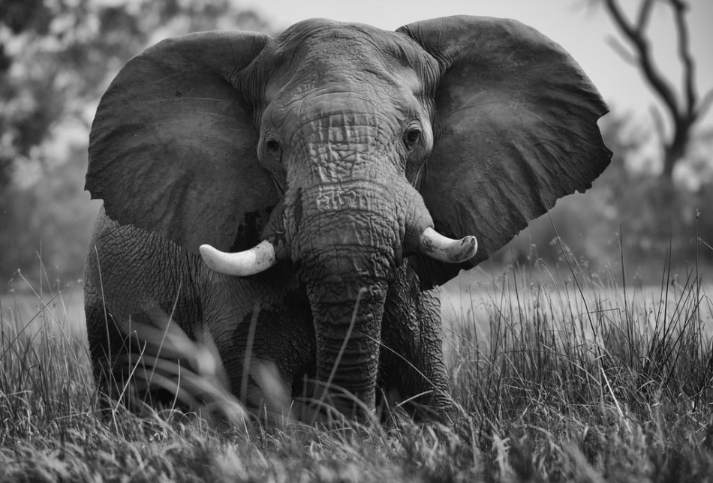
2. The size and average weight of the African bush elephant.
The African bush elephant is a lot bigger than the forest elephant or Asian elephant. It is the largest land animal by far, seeing that the average elephant will grow to between 8.2 to 13 feet (2.5 to 4 meters) from shoulder to toe. Males can get quite bigger than females.
These species can weigh between 5,000 to 14,000 lbs. (2,268 to 6,350 kilograms)
The largest elephant ever to be found was in Angola. His weight was about 24,000 pounds (10,886 kg) and he was 13 feet (3.96 meters) tall at the shoulder!
3. How fast can an African elephant run?
An elephant from the Savanna can run at a speed of 25mph (40km/h).
Did you know that an elephant can swim?! In fact, these mammals are natural swimmers!
Check out the video below of a swimming elephant, isn’t that impressive?
4. What do African elephants eat?
Elephants are herbivores, which means that they only eat plants. Their main dish is leaves and branches of trees and bushes, but they also eat grasses, bamboo, fruit, bark, and even herbs.
An adult elephant can eat up to 300 pounds of food in just one day and they need 16 hours a day to just eat! And they can drink up to 160 liters of water a day.
They can live up to 7 days without food.
Can you imagine why the cost of an elephant in a Zoo is rather high when they need all that food? This alone costs a Zoo about 1000$ per month for an elephant.
Have you ever seen a drunken elephant from eating overripe marula-fruit? It is a quite funny site to see! 🙂
5. Some info on the tusks of the African elephant.
Elephant’s tusks are actually fully grown incisors from the upper jaw and they keep growing throughout life. This is why older animals sometimes have very long tusks. Both females and males of the African elephant have tusks.
The tusks from the African elephant average about 6 feet (2 meters) in length and weigh about 50 pounds (23 kg) each.
They use them for fighting, feeding, and digging for water. Forest elephants have straight tusks and bush elephants have curved ones.
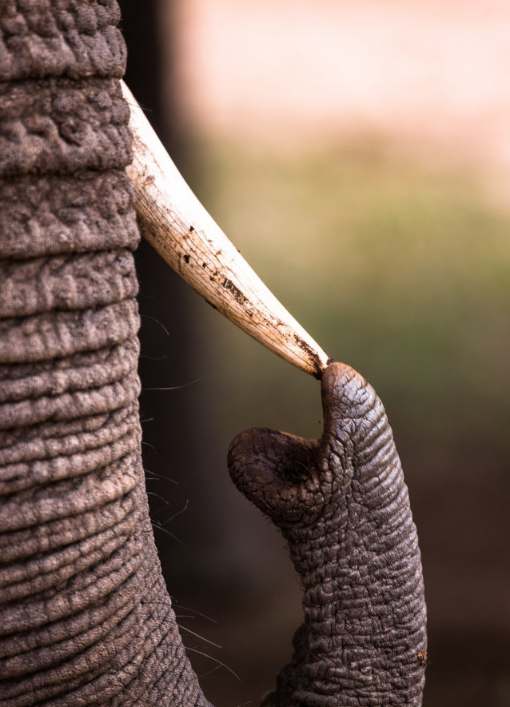
Tusks are made of ivory, which is worth a lot of money and makes the elephants a prime target for poachers, sadly!
Research has been showing that the elephants’ tusks keep getting smaller than a century ago, they are now about half the size. So evolution seems to kick in to protect these magnificent animals against humankind, but this is not an ideal situation for the elephants themselves!
6. How much does an African elephant poop a day?
You might find this a weird question, but I think that lots of people ask this, right? 🙂
As an elephant eats a lot of food for 16 hours a day, this also has the consequence that they defecate between 8 and 10 times a day. Meaning also about up to 300 pounds a day!
7. (Social) Behavior And Intelligence Of The African Elephant
I have been fascinated for a long time about the way these African elephants are living and have read countless books on them. (yes, I’m a little bit obsessed sorry:-) ).
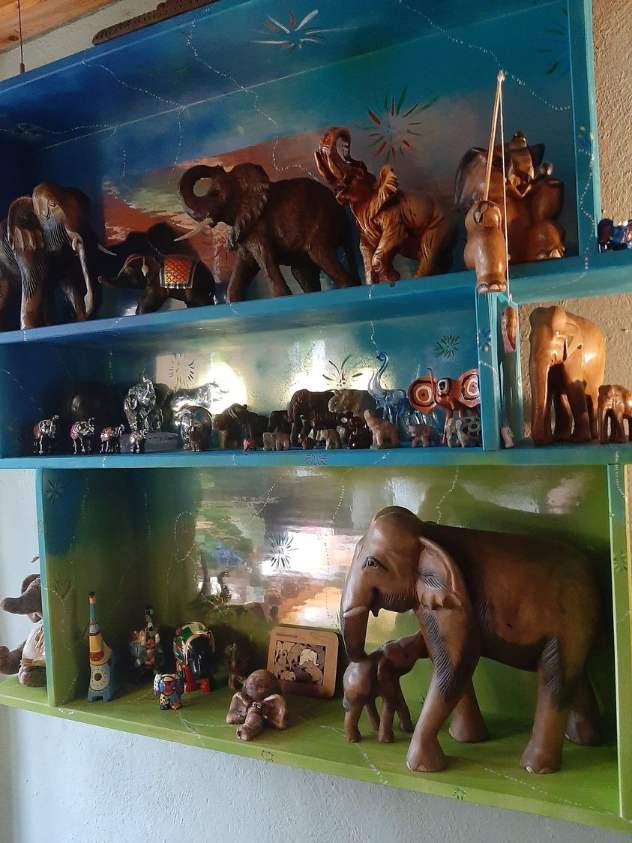
Elephants are amongst the most intelligent land animals. An elephant uses its mind in a different way than humans, but that doesn’t make them any less intelligent than humans.
The African and other elephant species are known to use tools, the same way as humans do, and they pass on their knowledge to the younger generations.
Elephants live in herds (with the matriarch, other females, and the young ones), in which the matriarch has the most knowledge and passes this on to future generations.
It is known worldwide that an elephant has a very good memory. Elephants can recognize other elephants and people, even after many years have passed. They can remember the fun and unpleasant events from the distant past and they know very well who is their friend or former enemy when they see them again.
Researchers as Joyce Poole and Cynthia Moss (I have both their books!), who spend their lives studying elephants, have found out that an elephant has the same emotions as humans have.
They can play, get crazy, get angry or sad, and even fall in love!
Elephants will help each other and will try to save a member of the group, even if they put themselves in danger. They are always happy to catch up with friends and really sad to see another elephant pass away.
I once saw a documentary on African elephants visiting an elephant graveyard, that was such an emotional thing to see! See the video below:
One of the most peculiar facts on the African elephant is that they often stay with dead relatives for a very long time as if they really don’t want to say goodbye.
Sometimes they even lay branches and leaves on them, as if they want to bury them. When elephants see the bones of other dead elephants, they often sniff and look at them for a very long time.
8. What age can an African elephant reach?
Under normal circumstances, an elephant’s life span can reach up to 60 to 70 years old (unfortunately, many elephants today do not live to that normal age).
After the age of 60, an elephant will no longer have new molars. Then it can no longer chew much food, so this weakens the animal until it eventually dies.
This doesn’t mean that an elephant dies of starvation.
The main natural causes of death for elephants are:
- inflammation
- cardiovascular disease
- infectious diseases
- simply general debilitation if the drought lasts too long.
- Unfortunately, the leading cause of death for elephants is often humans…
The story goes that the oldest elephant ever is called Raja, who lived as a temple elephant on the island of Sri Lanka. It’s been said that she passed away at age 82.
Yui Bua was an elephant living in Elephant Nature Park, and documents claimed that she was 104 when she died. This is all pretty uncertain though.
9. What are these species doing for fun?
Elephants like having fun things to do, just like humans!
- as said in point 7, they love to socialize!
- water games ( a plus is that it cools them of in the heat )
- they just love to take mud baths ( cools them of as well and protects their sensitive skin from sunburn)
- playing football and having fun with others
Have a look at this adorable young elephant having its first bath!
10. Male versus female elephants in the wild.
Female elephants have the longest pregnancy of all land animals and it can last up to 23 months ( that is 680 days! ). Apparently, all this time is needed to deliver babies that are smart enough to survive. A study of this was made by the Leibniz Institute.
This long pregnancy is needed to develop their brains so that they can understand the sometimes complex social structure of a herd from the moment that they are born.
Male elephants sometimes have this peculiar thing called “musth“. This is a state they are in when the levels of a hormone called testosterone can be up to six times higher than normal. During these times, the males are very sexually active and can get quite aggressive as well.
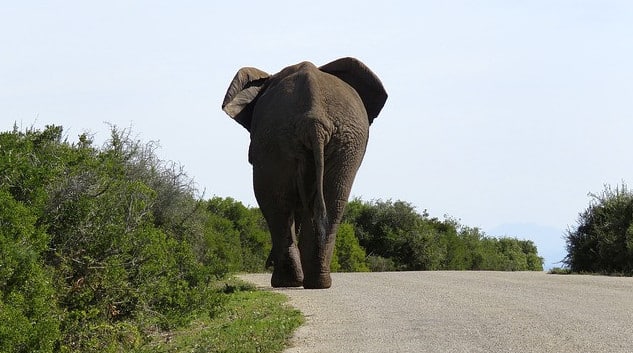
11. What is their role in the ecosystem?
The effects of elephants on large ecosystems such as the savanna, (as in National parks), are complex but in short: by cutting down trees and digging holes in dry riverbeds, elephants ensure that smaller species have access to food and water as well.
This way elephants play an essential role in the conservation of nature in Africa ànd Asia and they are the cornerstone of these ecosystems.
12. We must not forget about the trunk!
Without a trunk, an elephant would be severely handicapped. The muscular trunk allows the animal to drink water, grab something, and it uses it to smell, feel and even listen. You would almost regret that people don’t have trunks :-).
No one knows exactly how many muscles are in a trunk, but estimations range from 40,000 to 150,000.
An adult elephant can store up to between 4 and 8 liters of water in its trunk. Young elephants drink directly from the water or from their mother’s udder with their mouths. They suck the water with their trunks and then spray it in their mouth. A young elephant does not fully master its trunk until it is about nine months old.
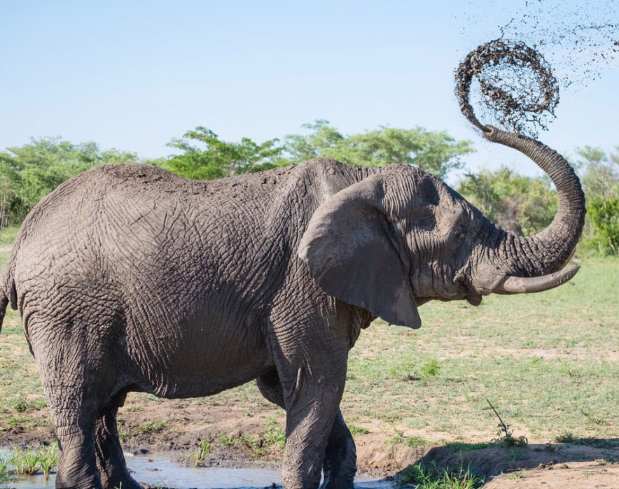
Did you know that some elephants carry their trunks on the left side and others on the right? Just like humans have a preference in using their arms and hands on either side?
13. Are African elephants endangered?
One of the saddest facts on the African elephant is that they have been hunted for decades. Despite the fact that this is now illegal, a lot of elephants are still poached for their tusks. Elephants also have less and less habitat left and they come to live closer to people. This creates conflicts between humans and animals.
3 things that put the African elephants in great danger are:
- Poaching : The tusks of the elephant are made from ivory, which is worth a lot of money. It is used to make sculpters, jewelry and even chopsticks. In 1989 there was an agreement to ban the trade in ivory and that improved the situation, especially in the early 1990’s.
However, elephants are still hunted. Especially in Africa, every year, tens of thousands of elephants are still poached for their precious ivory. - Loss of habitat : More and more and larger parts of the elephant’s habitat are being turned into agricultural land, which means that elephants are getting a lot shorter in living space. The less nature remains, the more difficult it becomes to find enough food. The African elephant’s habitat has declined by 50% since 1979.
- Conflicts between humans and animals: As elephants are living closer to people due to losing their habitat, these animals sometimes destroy crops. Therefore they are often shot, even sometimes legally by park authorities.
The African bush elephant is considered endangered, the forest elephant is even seriously endangered.
Places where I have visited and seen the African elephants:
- Our stay at the Avoca River cabins near Addo elephant park.
- Our stay at Pongola Private Game Reserve, where we got charged by an elephant!
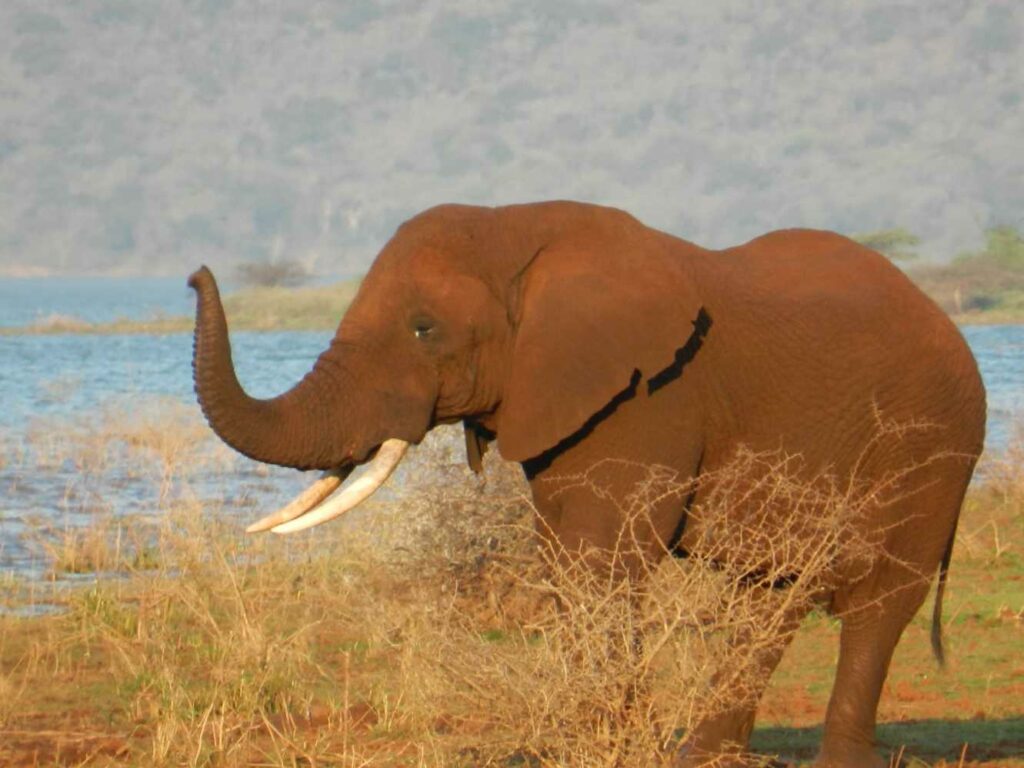
A charging bull at Pongola game reserve, you always need to be careful with elephants, especially when they are in Musk!
My Final Conclusion.
I do hope that you have enjoyed this article on the 13 facts on the African elephant and that I have answered every question that you might have on this topic.
If you have something else to ask or if you would just like to leave me a message, please feel free to do so below in the comment section!
Happy travels!
Kind regards,
Lizzy
I now have a YouTube channel as well!
YouTube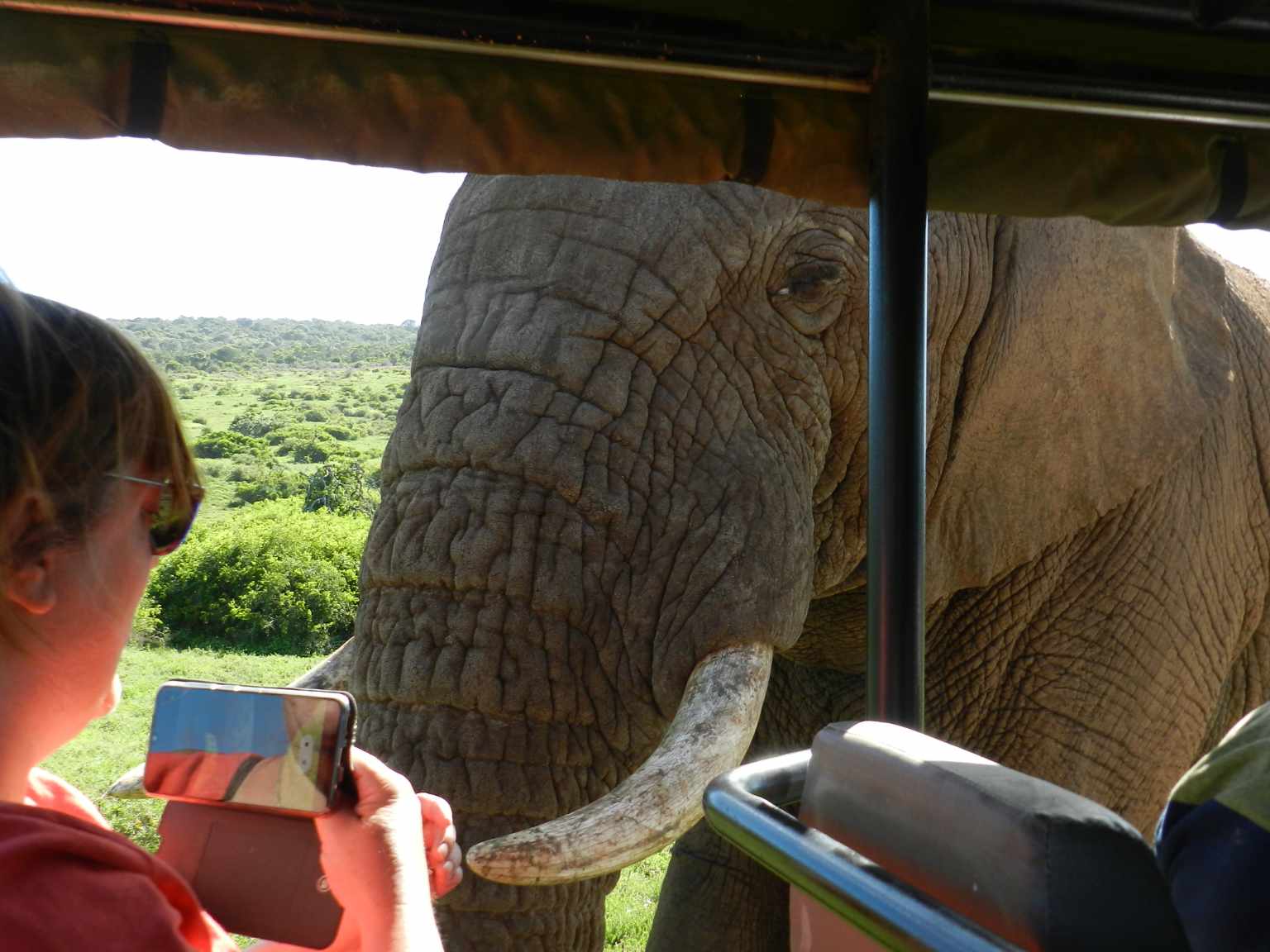
Hello Africa travellers!
Who am I? Well, the least you can say is that I am quite crazy about Africa, its nature, its climate, its culture, and more.
As a young woman in my twenties, I had already traveled to several African countries by traveling along in an overlander on my own and mostly camping ( or glamping ) and just fell in love with the diversity of it all.
So much, so that at the age of 26, I went back to university to study biology, which, unfortunately, I couldn’t finish because of health reasons (yes, I got sick from a tropical disease, oh cynicism). But this did not stop my dream of traveling back to Africa several times, and I still do.
My dream was back then to leave Europe and go study animal behavior, especially the elephants (sure, that’s every girl’s dream haha), but I am also very much intrigued by hyenas and other “ugly African animals“.
So, I “kind of” have a little bit of a scientific approach to my articles, when I write about African birds, for example. And most of all: the passion.
But life goes on, you move from one side of the country to the other, you get sick again and top it off with lower back problems, and before you know it, you are over 50 hahaha!
Now, I still travel to Africa, but take it a bit “easier” than the good old camping days, and stay in comfortable, yet affordable accommodations, together with my husband Wouter.
These are some of the countries I have traveled to: Kenya, Tanzania, Zanzibar, Malawi, Zambia, Zimbabwe, South Africa, Namibia, Botswana, Tunisia, and a little bit of Lesotho LOL .
While clearly not being African territory, but Spanish, I also visited Gran Canaria and Tenerife, and location-wise, I consider them “African”, because of their climate and nature, sue me :-p
The last trip I took was to South Africa in the year 2023, and it sure got the fevers for Africa back! From the Barberton mountains to the Drakensberg and the Southcoast, one month wasn’t enough at all to see the whole country, so we’ll be back! At ease and with a little bit more luxury than in my younger days haha!
I wish you happy travels!
Kind regards
Lizzy

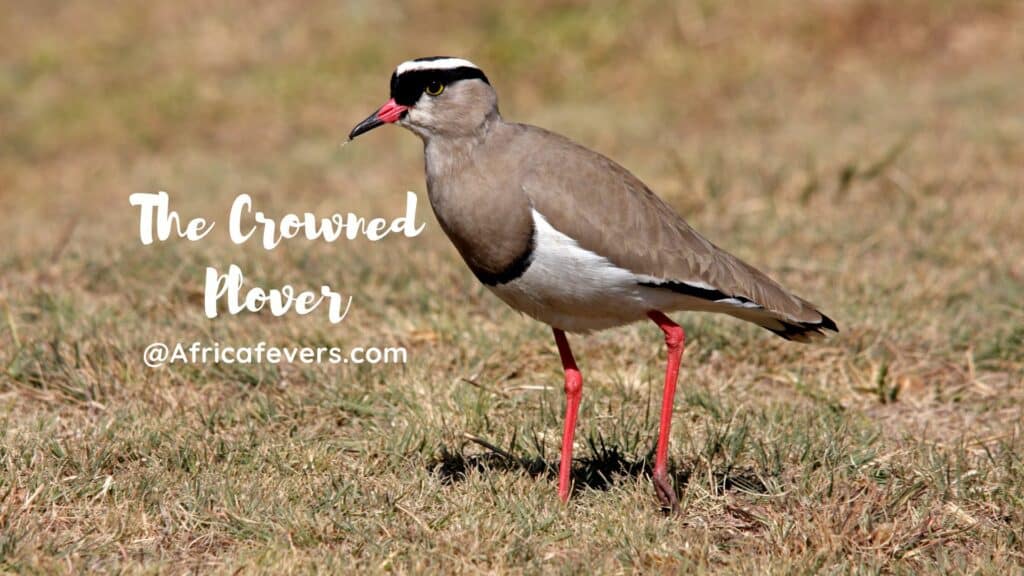
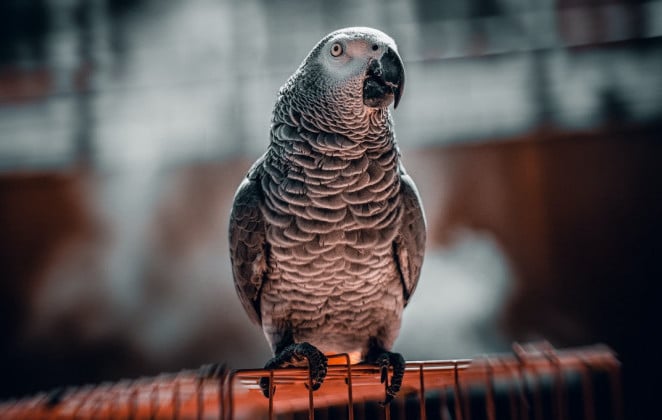
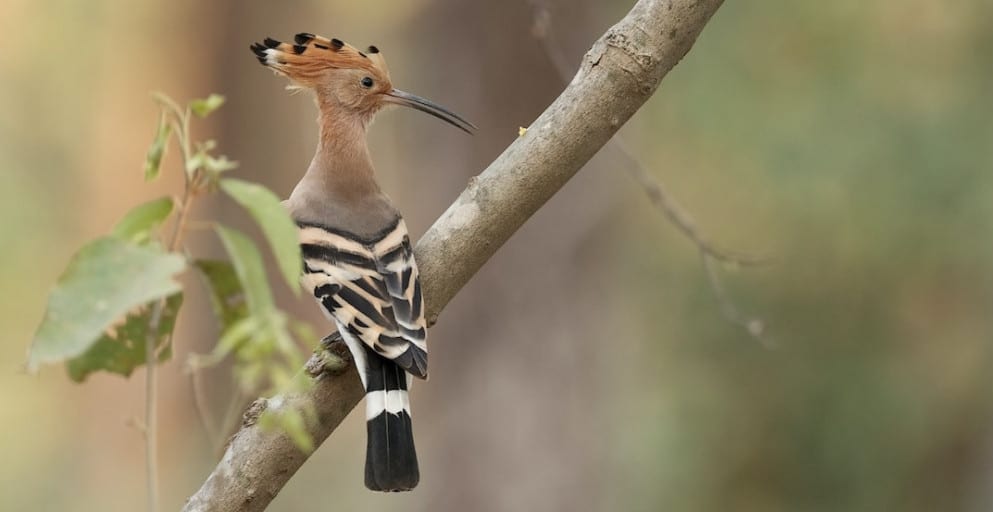
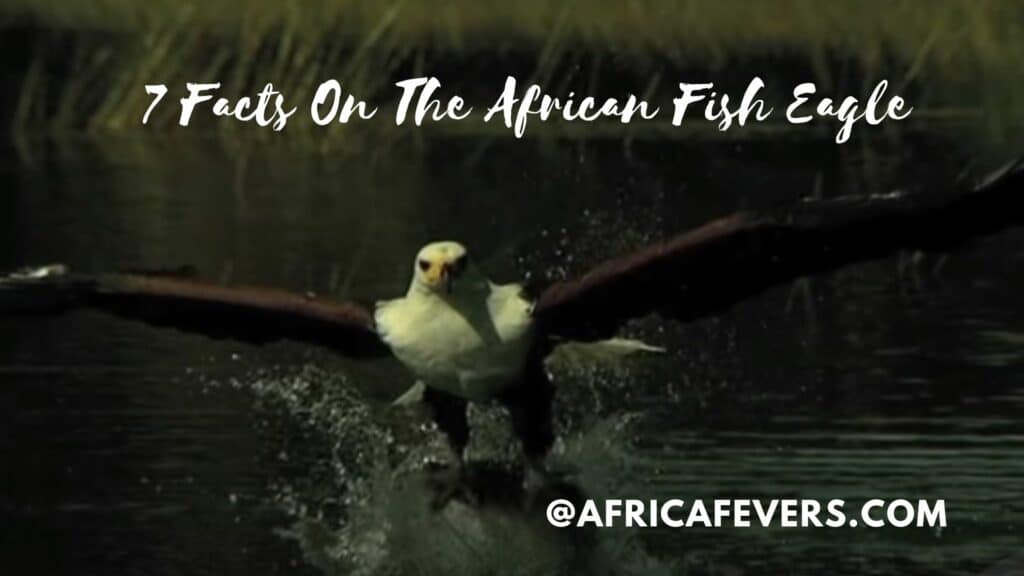
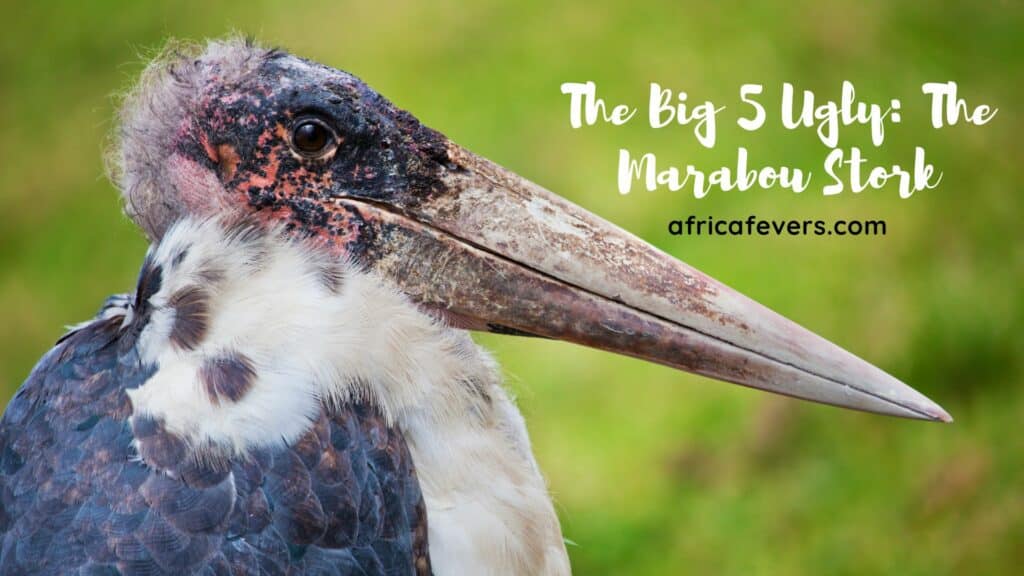
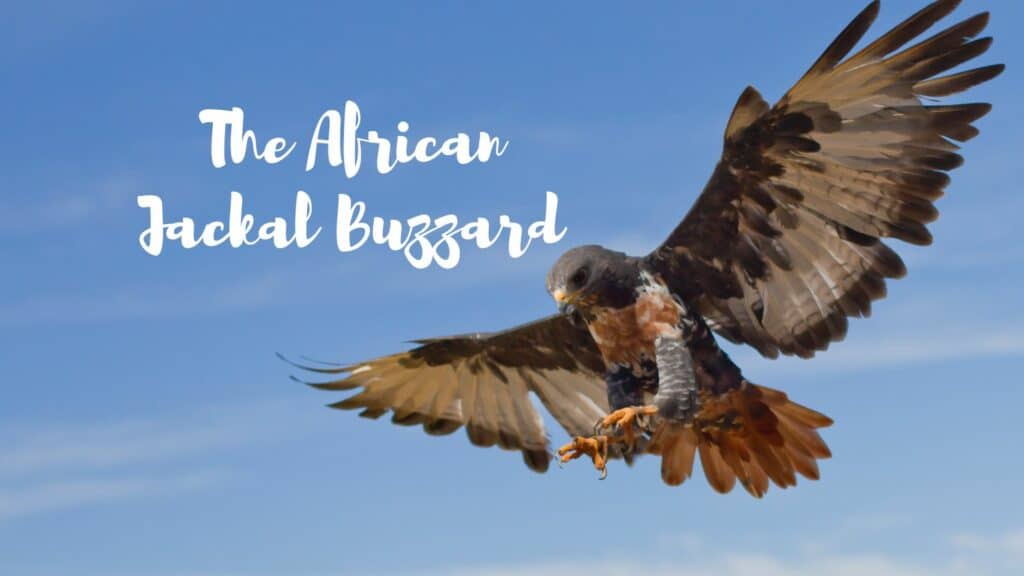

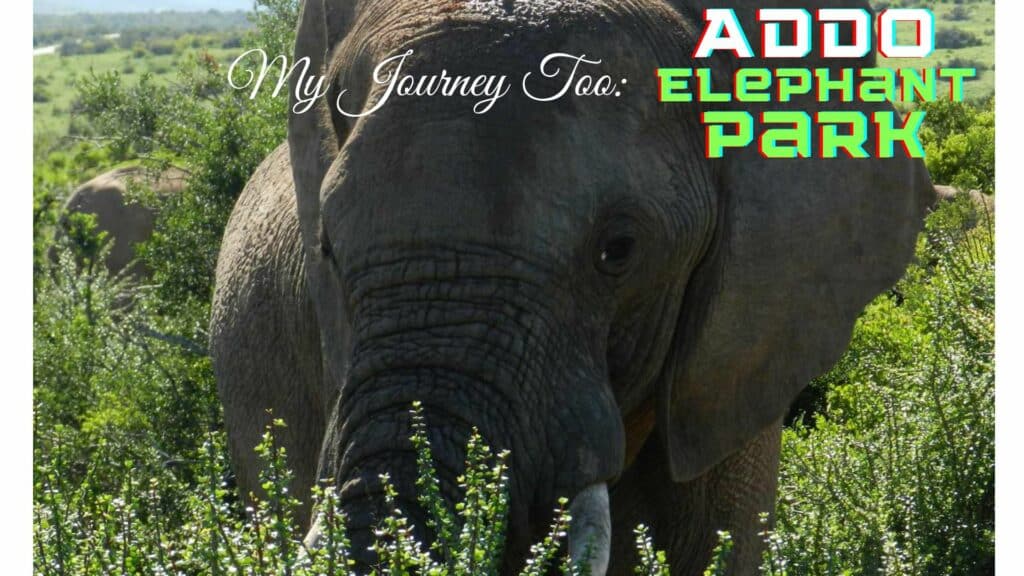

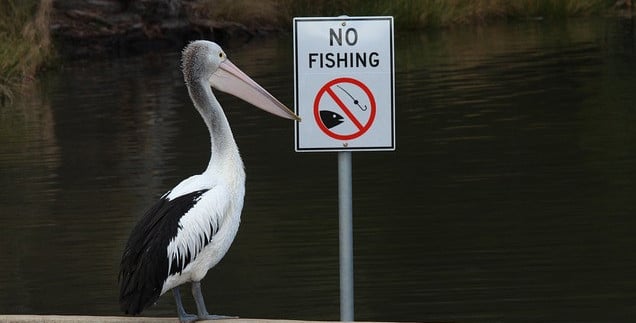
What an informative article! My favorite animal is also the elephant, but I had no idea there were 3 types. I only thought there were 2. I really enjoyed learning facts about their weight, socialization and lives in general. I also didn’t realize that their tusks continue to grow continuously. I’ll have to bookmark your site and come back to read more. Thanks for sharing all this!
Hi Lee!
Well, I am a little obsessed with the elephant, hence all the little facts that I know of lol. You are very welcome!
Your article reminded me of the experience I had in a South African game reserve just on the border with Botswana. We went for a bushwalk in the morning as was planned with our two guides. As we walked away from our truck one of our guides was watching a herd of elephants on a hill about half a mile or so away back where we had come from. Later in the morning, we were returning to our truck and the herd had moved closer to where we were parked. We were about 500 yards from our truck along a path but there was one of the elephants in the bush very near the path where we would have to walk. It was a very tense moment. One of our guides explained he was going to walk to the truck and drive back to us to pick us up. We all had to stay perfectly quiet so as not to upset the elephant. It all went well and when he came nearer to the elephant she just moved away deeper into the bush. As our guides explained to us, elephants are particular in that they are all individuals and can be very unpredictable. Lions, buffalo, leopards, and rhinos are more predictable but you can never be sure how an elephant will behave once they catch your scent. That event was now 25 years ago but I remember it like it was yesterday. They are indeed fascinating and humbling creatures. Best regards, Andy
Hi Andy!
Thank you for telling this wonderful story from a fellow Africa-traveller. Stories like this are so plenty and it’s such great fun to sit around the campfire in the evenings and hear all these stories about confrontations with wild animals, isn’t it?
I have actually been to Botswana as well and I remember confrontations with a big bull, when we were on the river with a canoe. He was drinking at the side of the river and made himself really big with his ears wide open when he saw us. We didn’t move until he left, I think it was for 15 minutes at the least. The adrenaline was pumping for sure! Oh my, I just want to go back haha!
happy travels!
Lizzy
Thank you Lizzy,
What an excellent article. There was so much I learned about the African Elephant that I didn’t know. I thought the videos you added were also outstanding. Especially the one that shows how elephants seem to contemplate the death of another elephant. They are obviously intelligent creatures. I bookmarked your site and plan to be visiting it again soon!
Hi Monty,
Thank you very much for your interest and I hope you will visit again soon. The next article will be about hyena’s! 🙂
kind regards,
Lizzy
Thanks Lizzy!
What inspired your fascination with African elephants? Was there a particular moment or experience that sparked your interest, or has it been a lifelong admiration? Also, considering the challenges they face with poaching and habitat loss, what do you think individuals and communities can do to contribute to elephant conservation efforts?
Hi Jason!
You are welcome!
What inspired me to be fascinated with African elephants, do you have a few hours haha?
Seriously though, my fascination started when I saw them for the first time in the wild, which must have been in Zimbabwe when I was in my twenties. Also, the fact that they just ran through a campsite at night, because their dung was all over, and nobody even heard a single thing!
And then the first time that you see a baby elephant in the African savannah or the first you have a close encounter with a gentle giant at Schotia game reserve, this deepens the bond with these magnificent animals!
Conservation attempts of the African elephant are all over Africa, but especially we were impressed by conservationists like Suzy at Pongola game reserve, this is where the story of people making an effort to save this Earth’s creatures begins, with education for the local people.
I wish you a great safari!
Kind regards,
Lizzy